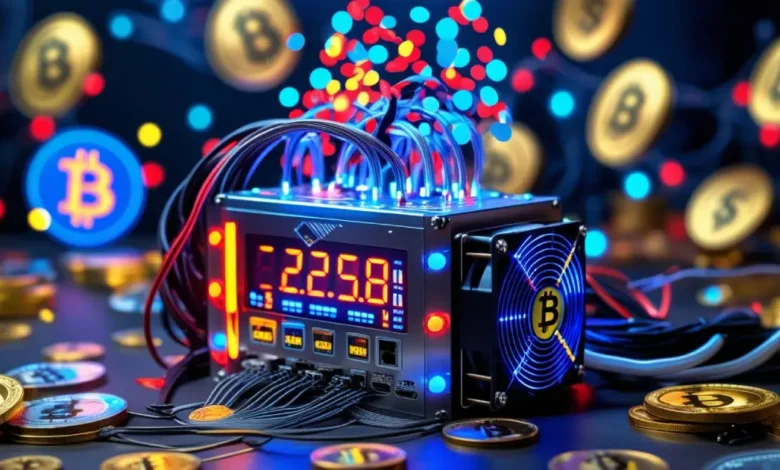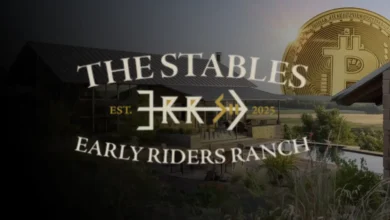Why Bitcoin Lottery Mining Has Better Odds Than The Powerball

Bitcoin home mining with low-power devices like the Bitaxe, a new trend in the Bitcoin world, is starting to captivate the imagination of many, as the math appears to challenge the odds of winning big lotteries like the Powerball. Dubbed “lottery mining” for its low-probability, high-reward nature, devices like the Bitaxe and many other home mining devices — some of which can heat your home — also give you a chance to win big.
This article compares the various types of mining pools that can be considered lottery mining and their mathematical odds, expected rewards and costs of solo mining with home miners, compared to the biggest lottery in America — the Powerball.
Lottery Mining Pools
Mining pools refer to communities of Bitcoin miners combining their hashrate to get better odds of winning a block reward, which they then distribute among each other, proportional to their contributions. Lottery mining pools play with this proportionality.
The most common form of lottery mining today is often called solo mining and refers to pools run by a third party or the individual miner that allow the user to connect their device to the Bitcoin network and play the mining game — hoping to win the full bitcoin reward without sharing any portion of the reward with other miners in the pool. The benefit of joining a “solo mining pool” is not having to run mining pool infrastructure, which has a slight learning curve, but requires the user to run a full Bitcoin node plus some mining pool software.
Other experimental mining pools play with the reward distribution to create different incentives. Today, Parasite pool is the most well-known “mixed” lottery mining pool, rewarding the lucky hasher who finds a block 1 BTC of the full block reward (3.125 plus transaction fees); the other 2.125 and change are given to the other miners in the pool as a consolation prize for their contribution, incentivizing the hashrate growth of the pool and thus the odds everyone involved has of winning some bitcoin.
The Lottery Mining Math vs The Powerball
Let’s take a Bitaxe miner as an example. It operates at an average of 1 terahash per second (TH/s) against a Bitcoin network with a total hashrate today of 1,086 exahashes per second (EH/s). That 1Th Bitaxe yields a per-block win probability of 1/1,086,000,000. The table below explains the scale of hashrate denominations. The current Bitcoin block reward of 3.125 BTC plus change is over $315,000.

A Powerball ticket costs $2, with a jackpot of $500,000,000 and per-draw odds of 1/292,200,000. The odds and rewards of the Powerball seem much better than home mining with a Bitaxe — three times better in fact — but here’s the catch: The Powerball is played only about 156 times per year, whereas Bitcoin blocks can be won 52,500 times per year, or every 10 minutes. That means that, while you can spend $312 a year playing the Powerball 156 times, for less money (about $200 for a Bitaxe plus yearly average electricity), you can play tens of thousands of times more. Also, you can always just buy a few more Bitaxes or a more powerful home mining setup and multiply your odds.
Let’s continue with this 1Th/s Bitaxe example.
While odds in principle do not accumulate the more attempts you make (the odds are a constant), conventional wisdom says those who do not play at all have zero chance of winning. There’s a common saying, often attributed to hockey legend Wayne Gretzky, that “you miss 100% of the shots you don’t take.”
The trading world understands this counter-statistical concept from the perspective of risk. If the cost of losing is small, then it may be worth taking that risk as long as the chances of success are good enough and the reward is substantial. What matters is not getting rekt, not getting liquidated, not taking so big a loss that you can no longer play the game.
That intuition about opportunity cost can be quantified with this binomial probability formula (1 – (1 – p)^n).
So, with approximately 52,500 Bitcoin blocks mined annually (one every 10 minutes), the annual probability of winning at least one block is 1 – (1 – 1/1086,000,000)^52,500 ≈ 1/20,686.
Compare this to the Powerball with 156 draws per year (about three times per week), the per-draw odds are 1/292,200,000. The annual probability of winning is 1 – (1 – 1/292,200,000)^156 ≈ 1/1,873,077. Now, we’re talking.
This principle — this intuition, if you will — extends to Bitcoin mining. It’s particularly relevant for lottery mining, whereby playing thousands of times more than the local lotto, you might just get a big payout of sound money straight to your Bitcoin wallet.
There is, of course, other benefits to home mining, such as potentially heating your home with electricity you’d be spending on a home heater anyway, but now you are also mining Bitcoin. And there’s lots of innovation in mining pools starting to happen that might yield extra benefits that are not so strictly quantified — the least of which is learning about hardware, energy, and money.
That’s something you definitely won’t be getting from your local lottery.
(I vibe coded a lottery mining calculator to run these numbers with your own hash rate, if you like to play with it. Its open source. )
Source link





